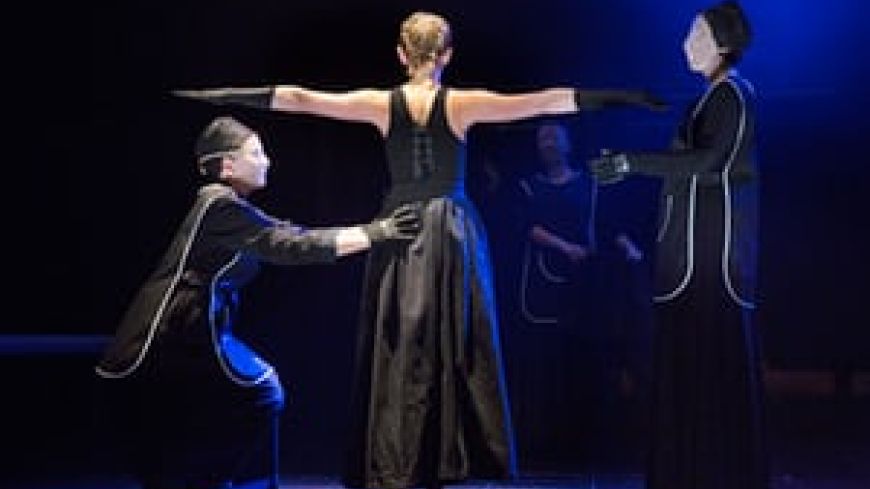
Currently dominating the advertising for the EIF, Alan Ayckbourn’s new play The Divide, in two parts, can hardly be missed when wandering Edinburgh’s city centre.
For Ayckbourn, this marks a somewhat drastic departure from his norm. The Divide is a work of science fiction; in a near, dystopian future in which a deadly plague has devastated the male population of Great Britain, women (who carry the virus but are immune) and men (who are vulnerable) have been divided to preserve the lives of those men remaining. A North/South divide has been set in place, with men residing to the north and women to the south, and the events of the play take place south of the divide in Sarum village, formerly a part of Wiltshire.
The story follows two children, Soween and her brother Elihu, mainly through diary extracts. As the siblings grow up, they develop feelings for their peers; in a society where homosexual relationships are normal and heterosexual ones are deviant and dangerous, it spells trouble for Elihu when he and Soween’s best friend Giella fall in love. This is part one.
What follows in part two is a self-confessed ‘retelling of the Romeo and Juliet story.’ The Divide is a regime full of restrictions and inequalities; people are made to read from the Book of Certitudes every day to enforce the belief that women are sinful and inferior, while men are painted as innocent victims and superior beings. Critics are constantly drawing comparisons between this and Margaret Atwood’s The Handmaid’s Tale and it’s obvious as to why; the segregation, biblical orthodox way of life and the restrictive dress code that keeps women uncomfortably in their place are all similar ideas. The orthodox aspect is also reminiscent of The Crucible, with trial scenes and gruesome punishments, and we have already mentioned Shakespeare – so what are these plays about?
What is an interesting concept for a dystopic future grows old after the first three hours. There is so much set up that by the end of part one it is clear what part two will be, and that only lessens the appeal of sitting through another three hours.
Ayckbourn originally intended this work to be published as prose, which does beg the question ‘why wasn’t it?’. Or why did nobody at any point say ‘this needs a bit of an edit’? The depth of storytelling one can find in a novel is inappropriate onstage, and this trend of having two-part plays is disloyal to theatre audiences. The story of a play should be the length of a play. Much of the narrative is through diary entries, minutes of the Sarum Village Council and correspondence, so more of the play is said than done.
Despite having an almost entire novel to monologue, Erin Doherty as the unfortunate Soween does a magnificent job of keeping us engaged with her and her story and keeps the ship afloat despite numerous plot holes.
With part one somewhat stunted for plot relevant events and part two the real test of endurance, it really is unclear as to why this story takes so long to tell. The introduction and development of this world is interesting – both parts are book-ended with ‘The Divide Lectures’, an academic lecture some hundred years after the fall of the Divide, but this serves to lessen the gravity of the Divided setting as we now know it will not last.
The design team from The Old Vic are, as you’d expect, superb. Despite the requirement for monochrome which is a shackle on visual interest, the staging is varied and clever. Annabel Bolton’s insightful direction has made silk from a sow’s ear. The cast are magnificent (it is certainly a tour de force for them) and the community choir produce some gorgeous sounds backstage from Christopher Nightingale’s score.
The concept is interesting and the delivery very long. One can’t help think if you’re going to tell a Romeo and Juliet story, be exciting about it.
8th-20th August, 2pm and 7.30pm often same day, sometimes staggered.
*On a personal note, if you have interest for the genre and are prepared to spend six hours on the story, give yourself a break between parts.

